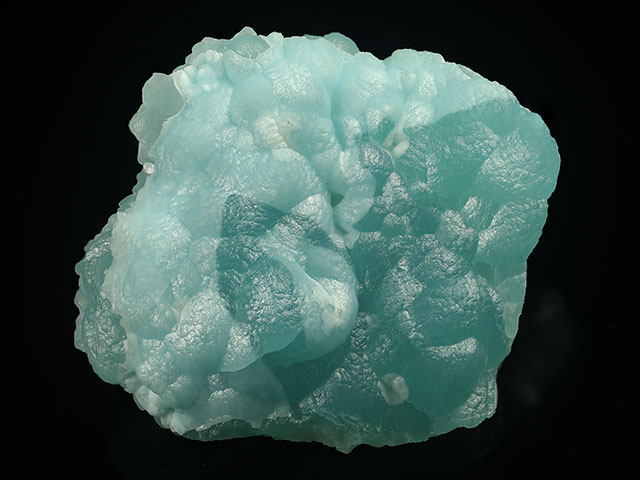Home > American Minerals IV – August 26 > MS1647 Smithsonite
Smithsonite - Sold
- Kelly mine
- Magdalena
- Socorro County
- New Mexico
- U.S.A.
- 4.2 by 3.8 by 2.0 cm – Miniature specimen (fits into a 5 cm cube)
Smithsonite is a zinc carbonate. In zinc deposits, the mineral is quite common, and often confused with hemimorphite. Beudant (1832) named the species after James Smithson (1754-1829), who founded the Smithsonian Institution. Smithsonite typically appears as rounded and botryoidal formations. At this locality in New Mexico, inclusions of aurichalcite impart a sea foam blue coloration.
This is a botryoidal mass of smithsonite, with minor attached limestone matrix on the backside. Its rich sea foam color is classic for the locality; it is a so called "American mineral treasure" (Staebler & Wilson, 2008). This specimen was part of the Charles Trantham (1936-2020) estate.


